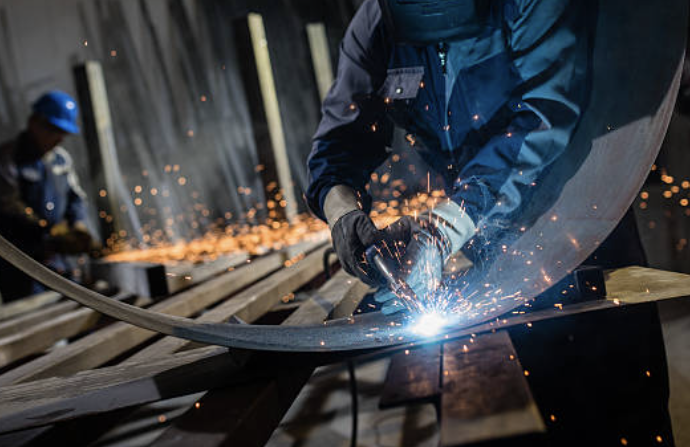
Posted on Monday, November 25, 2024
Advancements in Computer Numerical Control (CNC) technology are significantly transforming the U.S. metal fabrication industry, enhancing precision, efficiency, and flexibility. Key developments include:
1. Integration of Automation and Robotics
Modern CNC machines now incorporate automation and robotics, enabling them to perform multiple tasks—such as cutting, punching, bending, and welding—with minimal human intervention. This integration accelerates production, ensures consistent quality, and reduces errors.
2. Adoption of Multi-Axis Machining
The shift from traditional 3-axis to 5-axis CNC machines allows for the creation of complex geometries in a single setup. This capability not only enhances precision but also reduces production time and costs.
3. Emergence of Hybrid Manufacturing Techniques
Combining CNC machining with additive manufacturing techniques, such as 3D printing, enables the production of intricate parts with reduced material waste. This hybrid approach offers greater design flexibility and cost-effectiveness.
4. Implementation of Smart Controls and Artificial Intelligence
The integration of AI and smart controls in CNC machines facilitates real-time monitoring and optimization of machining processes. This leads to improved efficiency, predictive maintenance, and enhanced decision-making capabilities.
5. Development of Advanced Tooling Technologies
Innovations in cutting tools, such as the use of high-performance coatings and advanced materials like ceramic and carbide composites, have improved durability and efficiency. Additionally, smart tooling equipped with sensors provides real-time feedback on tool conditions, further enhancing the machining process.
These advancements collectively contribute to a more agile and competitive metal fabrication industry in the U.S., capable of meeting the demands of modern manufacturing with greater precision and efficiency.

Understanding Coil IDs, Mandrel Sizing, and Shear Pin Safety in Uncoilers
Posted on Wednesday, October 1, 2025
Mismatched sizes can lead to machine damage, downtime, and safety hazards — often evidenced by a shear pin failure.

How Coil Tensile Strength Affects Roll Forming and How to Adjust Your Machine
Posted on Wednesday, October 1, 2025
Changes in tensile strength can significantly affect the finished profile, causing misaligned bends, uneven edges, and out-of-spec parts.

Why Paint Cracks on an Embossing Line Running Pre-Painted Coil and How to Prevent It
Posted on Wednesday, October 1, 2025
This issue not only affects the visual quality of the product but can also lead to increased scrap rates and customer complaints.

The Most Popular Standing Seam Metal Roof Panels in the U.S. — A Comprehensive Guide
Posted on Monday, September 29, 2025
In this post, we’ll explore what panel styles and sizes are most popular in the U.S